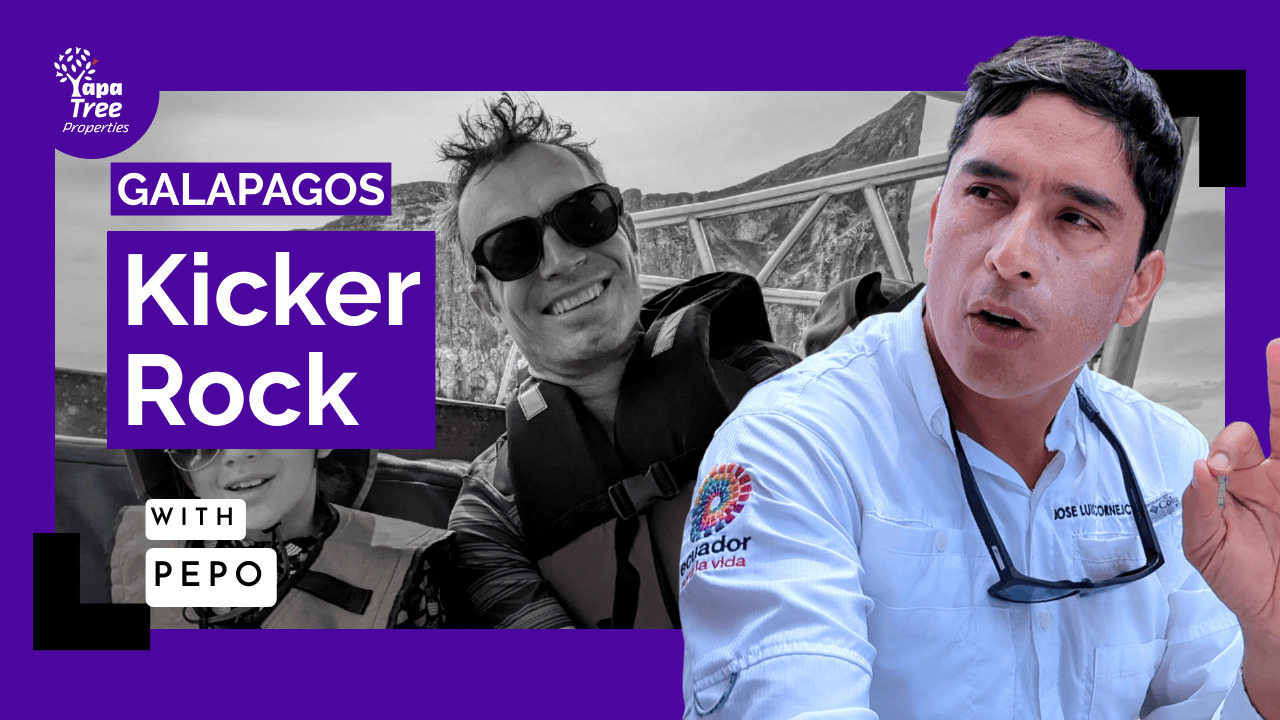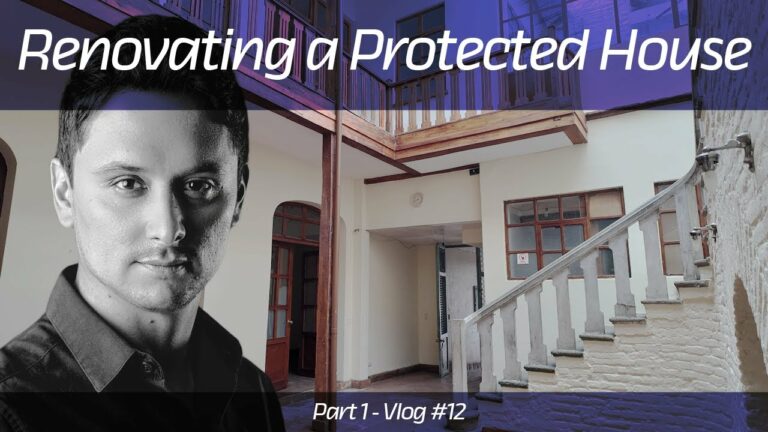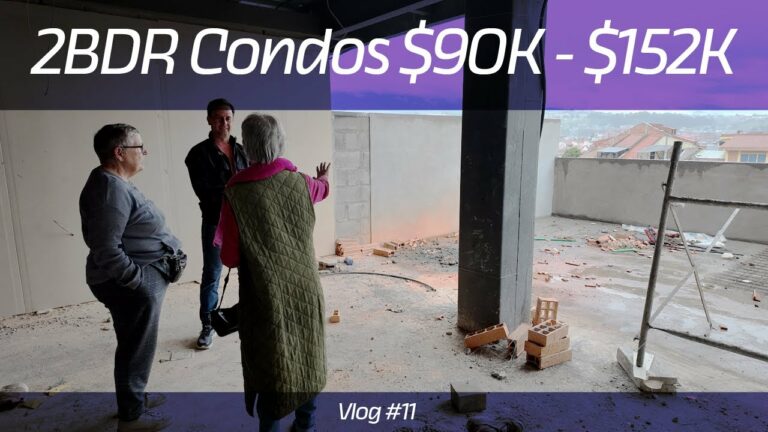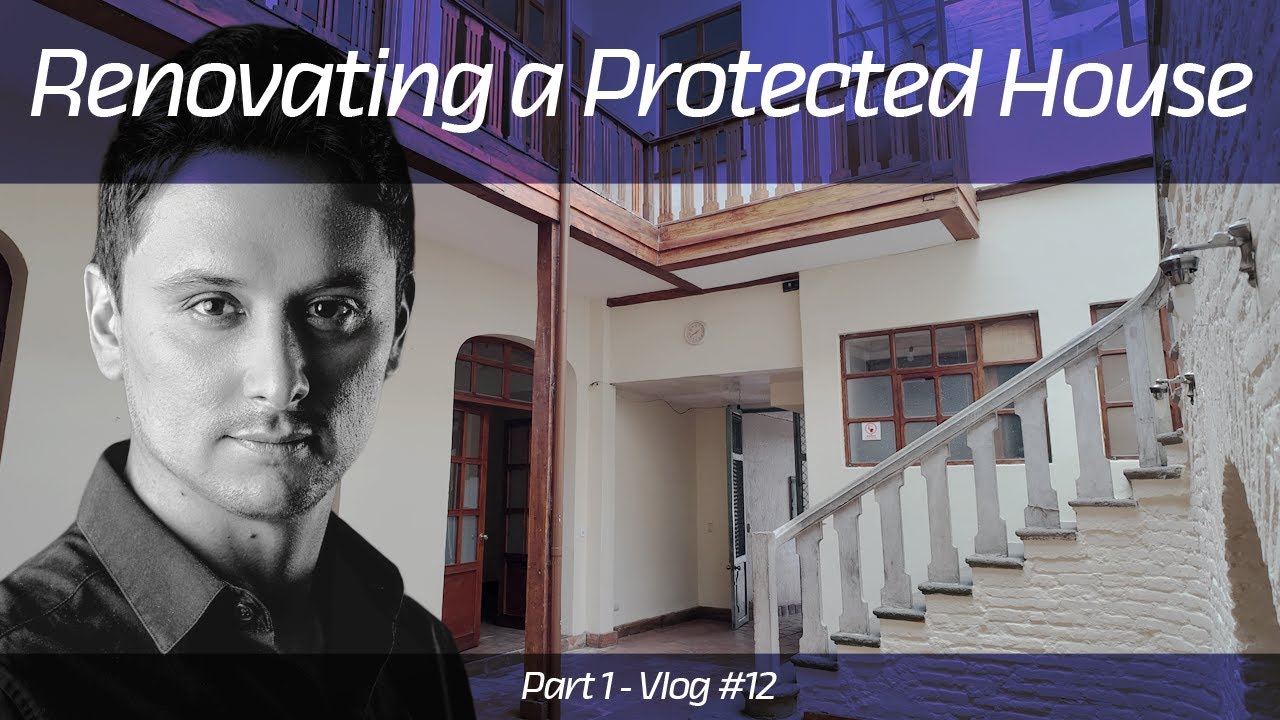Hey there, it’s Jason from YapaTree, and today I’m thrilled to take you on an unforgettable journey to two of the Galapagos’ most iconic spots: Kicker Rock and Playa Cerro Brujo, also known as Witch’s Hill Beach. Join me as we plunge into crystal clear waters, snorkel with Hammerhead sharks, and immerse ourselves in the extraordinary marine life that graces these enchanting landscapes.
Setting the Scene
Our day kicks off around 7 AM with a brief on the dock as we eagerly await our boat’s arrival. The excitement builds as we navigate through the harbor, greeting lazy sea lions lounging on boats. A delightful surprise awaits as we witness humpback whales breaching, providing a captivating start to our adventure.
The Spectacle of Kicker Rock
As we sail towards Kicker Rock, passing Darwin Bay and beautiful beaches, including one we’ll explore later, the anticipation builds. Kicker Rock, or Leon Dormido, stands out with its unique shape, resembling a Sleeping Lion. On this visit, we opt for a family snorkeling tour around the stunning rock formation, encountering various birds and playful sea lions.
Underwater Marvels
Equipped with safety buoys, even the kids take the plunge into the open ocean. Despite a bit of nervousness, the visibility of around 15 meters allows us to marvel at the rock’s sides, spotting fish, juvenile hammerhead sharks, turtles, and a majestic eagle ray. The snorkeling adventure lasts about an hour, and back on the boat, we warm up with tea and snacks, relishing the highlights of our underwater escapade.
A Visit to Playa Cerro Brujo
After a delicious lunch, we set sail for our second stop, Playa Cerro Brujo. The 25-minute journey reveals turquoise waters and fine sands, earning this beach the title of San Cristobal’s Best Beach. It’s accessible only by boat, preserving its pristine beauty. The beach is renowned for turtle nesting, and our guide emphasizes the importance of respecting boundaries to protect these delicate creatures.
Interview with the Guide
Before delving into the interview with our guide, Pepo, the beach’s beauty and the need for conservation are highlighted. Playa Cerro Brujo serves as a haven for various wildlife, including sea turtles, and our guide ensures we tread lightly to safeguard their nesting grounds.
Getting to Know Kicker Rock
In an insightful conversation with Pepo, a Galapagos National Park Naturalist guide, we explore the significance of Kicker Rock. Locally known as Sleeping Lion Rock, its eroded form serves as a nesting area for birds and a prime spot for snorkeling and scuba diving. The highlight? The chance to spot hammerhead sharks while snorkeling on the surface.
Snorkeling Highlights
Recapping our snorkeling adventure, Pepo shares that we encountered a juvenile hammerhead shark, white tip sharks, sea turtles, and even an eagle ray. He emphasizes the importance of analyzing sea conditions and currents for a successful snorkeling experience. Pepo’s insights and knowledge add depth to our appreciation of the marine wonders at Kicker Rock.
Playa Cerro Brujo – A Hidden Gem
As we transition to Playa Cerro Brujo, Pepo marvels at the beach’s beauty and its role as a crucial nesting area for Pacific Green Sea Turtles. The need to protect their eggs becomes apparent, with Pepo sharing how human interference can harm the incubation process.
Wildlife Conservation Efforts
Discussing the electronic tracking devices on turtles, Pepo sheds light on the various conservation projects in the Galapagos. These initiatives aim to gather data on wildlife movements, breeding cycles, and habitats, contributing to informed legislation and better protection measures.
Pepo’s Journey as a Guide
On a more personal note, Pepo shares his journey as a guide, spanning 20 years. Starting as a divemaster focused on marine life, he later embraced the role of a Naturalist Guide, exploring the diverse landscapes and wildlife of the Galapagos islands. Pepo’s passion for both land and marine ecosystems shines through as he recounts his experiences.
Parting Thoughts
As we conclude the interview, Pepo provides valuable tips for the Kicker Rock tour, emphasizing the need for patience and a keen eye for wildlife. His insights offer a deeper understanding of the intricate balance of nature in the Galapagos.
After bidding farewell to Pepo, we reflect on our extraordinary day. The return journey is filled with relaxed conversations, marking the end of an adventure that will be cherished by our family. Back in Saint Cristobal’s main harbor, we express our gratitude to the guide, captain, and deckhands who made this day a memorable one.
Wrapping up
If you’re considering your own trip to the Galapagos, you can find these island hopping tours at Galapagos Pronto. You may even get the same guide we used. Or, feel free to contact us if you’re after general Galapagos information and we’ll do our best to point you in the right direction.
Thanks for joining us on this Galapagos adventure, and stay tuned for more exciting journeys. Ciao!
View full video transcript
Kicker Rock & Playa Cerro Brujo San Cristobal Galapagos (Transcript)
Jason 00:00
Welcome back to our channel, Jason from YapaTree here. Today we’re taking you on a brilliant journey to two of the most popular spots in the Galapagos, Kicker Rock and Playa Cerro Brujo, also known as Witches Hill Beach. I also interviewed a Galapagos National Park guide at the end, which I really enjoyed. So get ready to dive into crystal clear waters, snorkel alongside Hammerhead sharks, and encounter some of the most unique marine life on the planet. Let’s dive right in.
Jason 00:28
Our day begins around seven AM when we have the briefing on the dock as we wait for our boat to arrive. Then the fun begins as we set course for Kicker Rock, we pass through the harbor, greeting some lazy sea lions chilling on boats. Then as we leave the harbor, the whole boat is buzzing. We’ve just seen some whales jump and the captain gets us closer to the action, but keeping our distance, of course. We spent around 10 minutes waiting for the humpback whales to breach and saw them multiple times.
Jason 00:58
On the way to Kicker Rock, we passed Darwin Bay and some beautiful beaches, one of which we’ll be visiting later on in the day. We see various birds including the famous blue-footed boobies. It’s a great build-up to the main event, Kicker Rock. Kicker Rock is very easy to find. Its unique shape is responsible for its local name, Leon Dormido or Sleeping Lion. It’s my second time visiting and the first time I was lucky enough to scuba dive here. Today we’ve brought the entire family along for a snorkeling tour. The rock formation is stunning and we circle it a few times as we wait for another boat to catch up. We get to see the various birds and of course sea lions.
Jason 02:11
Now it’s our turn to take the plunge. The kids are a little nervous as it’s their first snorkel in the open ocean. Our tour provides us with a round safety buoy which the kids make good use of throughout the entire snorkel. The visibility is around 15 meters, which means we can see the sides of the rock really well, but it’s not quite enough to view the bottom and this makes the kids a little bit nervous, but they’re still having a great time. We ended up seeing loads of fish, several juvenile hammerhead sharks, and around 10 turtles, and perhaps the highlight was a large eagle ray cruising along. We passed the channel that divides the rock formation but the currents were a little bit too strong today to swim into it. We were in the water for around one hour and the kids were really glad that they had wetsuits as it does get a little chilly after a while. Now back on the boat, we warmed up with some tea and some snacks whilst we waited for everybody else to get back to the boat. We then had lunch which catered to everyone with some meats, salad, and our favorite basil pesto pasta. It was really great to fill up the stomach and really warm ourselves up because it was a little bit chilly in the water.
Jason 03:26
We then pulled up anchor and set off for a second stop at Playa Cerro Brujo or Witch’s Hill Beach. After motoring for around 25 minutes we were greeted with the turquoise waters and fine sands responsible for many calling Playa Cerro Brujo, San Cristobal’s Best Beach. It’s only accessible by boat which is really kind of nice as otherwise, you do get the feeling that it would be very crowded – such is the curse of such a beautiful spot. The beach is also known for turtles to lay their eggs in and our guide provides some pre-emptive talks to the group so we put a firm limit on the boundaries to ensure that we don’t accidentally compress the sand and damage any turtle eggs. It’s very hard to know exactly where the turtles have laid their eggs so it’s really just best not to risk it. We have around 30 minutes on the beach to do some more snorkeling, exploring along the beach or just chilling and taking it all in. I was lucky enough to snatch some time with the guide for this interview. But before we get there, perhaps hit that like button. It really does help us reach more people. Thanks.
Jason 04:35
Hi guys Jason from the YapaTree here. I’m here with Pepo and he is a Galapagos National Park Naturalist guide and he’s taking us on a tour today of Kicker Rock. And along with this tour we do a couple of little beach visits as well and that’s where we are right now. But I just want to ask Pepo about some of the things that you might want to know about the Kicker Rock tour itself. So first of all, like what is Kicker Rock and why should people care about it?
Pepo 05:07
Yes, thank you, thank you. Well, Kicker Rock locally known as sleeping lion rock, because of this nice shape from 1 angle, you can actually see, when you see your imagination a lot of course, it looks like the the sleeping lion. This is a rock that, remember these islands where a long time ago there were active volcanoes, so now this one is quite eroded it’s an important nesting area for birds, but especially a great attraction for snorkeling and scuba. But it is known especially for the chances to see the hammerhead sharks, which are normally possible to see these islands in Galapagos islands. But you need to go scuba diving. In this case, Leon Dormido is the highlight of San Cristobal because of the chances they give you just snorkeling on the surface, very shallow to see hammerhead sharks.
Jason 06:09
And we saw one today, so we went on a snorkeling tour and I think most of the people, maybe a couple of people, didn’t see it, but it was it was a baby one. Would you say it was a baby or an adolescent?
Pepo 06:19
It was a, let’s say like a juvenile, maybe about three, four feet. We see sometimes the schools of hammerheads, you know, in conditions where we have a good visibility or better current. But yeah, today was, it was great we saw a white tip shark, we saw a hammerhead shark. Some of the other snorkellers saw eagle rays, there were lots of sea turtles. It was really good. It was very nice.
Jason 06:47
Yeah, it was it was amazing. We had a great time. Our whole family went and really enjoyed it and in terms of the tour itself, so it is a one-day tour or a half-day tour? How do you classify it?
Pepo 06:57
It’s considered a one-day tour because normally we leave the town, and the port around eight AM, and then after the snorkeling and the beach we visit, we come back around three in the afternoon. It’s a visit regulated by the National Park with the idea not to have too many boats, too many people at the rock snorkeling, scuba diving at the same time. So certain boats go in the morning to the rock and other boats go in the afternoon. So today we had a chance to go in the morning. It was beautiful conditions, and a lot of activity, and now we are at this beach called Cerro Brujo which is the northern part of the island looking at fantastic wildlife like pelicans, blue-footed boobies, and iguanas. There are lots of crabs around us right now on the beach, while People is still, you know, swimming, snorkeling with a great view of the rock. Kicker Rock is right in front of us.
Jason 07:56
And so this beach is absolutely beautiful. You know, this is clear turquoise waters, and I know it’s a bit of a haven for different animals you were just talking to someone up there that was maybe getting a little bit too close to where some potential turtle eggs might be. Can you just tell me about how that works, the eggs, and why you’re trying to protect them?
Pepo 08:17
Yes, first of all about the beach is Cerro Brujo or Wizard Hill. I’ve been to all the islands of the Galapagos, all the beautiful beaches, different colors and so on as you described. But I think this one in San Cristobal, when again in the northern face of the island is probably one of the best of Galapagos. Because of the combination of the again the view of Kicker Rock, the turquoise water, and the wildlife around us. Behind the beach, there is also a fantastic bear lava rock field. Amazing, amazing the colors. The upper part of this beach definitely is an important nesting area for sea turtles. For the Pacific Green Sea Turtles, we also saw snorkeling. They come really all year round with certain peaks, certain months that we see more. My idea is not to walk on the upper part because that is where they lay the eggs. So yes, we had some visitors, curious a little bit about the beach, and checking the vegetation. But then we had to stop them and say hey wait, wait because there might be eggs over there. And then we explain to them about how the sea turtles make it, how they do it at night time they come out of the water normally when it’s high tide, lay eggs, but really they can be anywhere in between the vegetation.
Jason 09:32
And you were saying, if too many people start walking over the top of them, maybe they can pack the sand?
Pepo 09:37
Exactly that is the main problem you know. You may crash the eggs. Of course, if you’re maybe jumping or too many people walking by, the main problem is that you are compacting. You will be compacting more the sand, and that won’t allow much air, much oxygen for the development, for the incubation of the eggs and of course, that won’t be good for the baby sea turtles.
Jason 10:01
Speaking of the turtles, when we’re out there snorkeling, I saw a couple that had this little electronic… looks like a tracking device basically plastered to their back. Can you just walk me through that? Like what’s that trying to just track their movements? Trying to track their breeding cycles or anything like that?
Pepo 10:20
We have different projects in the Galapagos, different studies with the different wildlife too, with sharks, whale sharks, sea turtles, also on land, with the giant tortoises. All these different markings and trackings are in order to understand more, you know, where they live, where they go in order to once we know more about them, we can also with that data justify better legislation or better control of certain areas that were doing different activities. So yeah, we have different technology nowadays to be able to study all these different species including the the sea turtles that we have here.
Jason 11:04
Fantastic and just a little bit about you, if you don’t mind Pepo. How long have you been guiding and why do you guide? I mean, obviously, it’s beautiful, I get that. But you know what attracts you to the guiding?
Pepo 11:14
I think in general living in the Galapagos is considered a blessing because I live in San Cristobal. I come out of my house and I am like 2 minutes at the beach and it’s not only a beautiful beach but you also have wildlife right there. You have sea lions, you have iguanas, you have pelicans, blue-footed boobies. You know you can snorkel off the beach and see amazing marine life. So just leaving here is fantastic, you know. Imagine having the pleasure of being a guide and working in the park. Taking people to these other cool places around is fantastic. I’ve been working as a guide for about 20 years. I am 40 years old. I started when I was, you know, 19/20 and in scuba diving. So I worked for almost five years as a dive master, taking certified people around the islands. There are more than 70 visiting sites and I know them all, they’re fantastic. Each one needs its own attraction, with its own wildlife, let’s say. And now, more or less 15 years, I’ve been doing this as a Naturalist Guide.
Jason 12:31
Fantastic. But I understand that they’re slightly different. So the marine biology side of things and the naturalist guide are they two separate things or can you just walk me through that?
Pepo 12:41
Between Marine Reserve Guide and Naturalist Guide?
Jason 12:45
They’re different, right?
Pepo 12:46
Totally different.
Jason 12:46
Certification, yeah.
Pepo 12:47
Totally different certification. No, you have a certification given by the Galapagos National Park Service, special courses they give to local people, only to local people, and one is specialized in scuba diving. So you only take people that are already certified scuba diving and you tell them to see fish, rays, sharks and so on and then these other certification needs to take people for snorkeling and for land excursions or volcanoes or different trails to look for wildlife. But it’s more inland known as a naturalist guide, but both are certificated by National Park.
Jason 13:25
And it sounds like you’ve swapped from one to focus on the other. Why why the the change in focus?
Pepo 13:30
Well, it’s in that case more about opportunities I’ve had in my case, family. My father has always been in the marine life, in the ocean as a fisherman as well. So I was being more interested in that, you know, in underwater stuff. That’s why I got certified as a scuba diver and then later as a guide. But then always seeing what else, what else can we have can we explore? So this other course to become a Naturalist Guide was announced by the National Park Service. So I said, “Hey why not.” So I took the course I got certified too, and now more working with land but still, but I’m still doing scuba diving. Not as a guide anymore, but it’s more as a photographer, maybe as an assistant to the main dive master. Because of course, scuba diving you cannot leave that, you know, it’s amazing.
Jason 14:30
Very addictive world! Can we see your photos anywhere?
Pepo 14:35
Well, yes, we have. I have my Facebook, you know, different pictures and videos.
Jason 14:44
I’ll send a link in the description to check those out.
Pepo 14:48
I also work for this local company called GalaKiwi and there they also have information about my job, videos I have taken, and a very nice collection. Still when I check it’s like, “Wow did I see that?” I have seen amazing things from tiny fish to whale sharks to orcas or manta rays. The Manta ray is my favorite animal. A completely different world and amazing, you know?
Jason 15:18
Fantastic and so any last tips or thoughts you want to give specifically about the the Kicker Rock tour that we went on today?
Pepo 15:27
Well, Kicker Rock is one of those places where you need to do snorkeling. Considering the marine currents, considering the sea conditions, you have to first analyze very well where you are going to start, and where you’ll finish because the currents will influence the activity. The activity means sharks or rays or sea turtles. But once you’re in the water, you also have to see what type of fish you see. Some of them are indicators of more chances to see the hammerheads you know. For example barracuda, for me barracuda, the main indicators because scuba diving and snorkeling where barracuda is, the other sharks are there because that means that day, there’s food right there. So that is the main thing you know. And patience you know with nature, with mother nature, with wildlife, just wait, just wait and wait for the wildlife, open your eyes look everywhere because it may take you one second to see hammerheads or to miss them. So it’s those two things they have to take into account.
Jason 16:41
Awesome well thank you very much for your time Pepo. I’m looking forward to enjoying the rest of the afternoon and thank you again.
Pepo 16:47
Excellent thank you as well. Thank you.
Jason 16:50
After the interview our time on this paradise-like island was up and we jumped into the Zodiac which brought us back to the main boat. The mood was extremely different on the journey back. I wouldn’t say somber, but it was very clear that we’d had a very fun-filled day and everyone was pretty exhausted. There was a lot of relaxed talking and some reflections on the day. We arrived back in the main harbor of Saint Cristobal mid-afternoon. We thanked the guide captain and the deckhands, for providing us with a day that our whole family would cherish for a long time.
Jason 17:23
Now if you’re planning to come to the Galapagos or simply want to find out more about these incredible places, check out the links in the description below. We’re very happy to put you in touch with the company that we used for this trip or provide other information you need. Thank you very much for watching and we’ll catch you in the next video. Ciao.



















